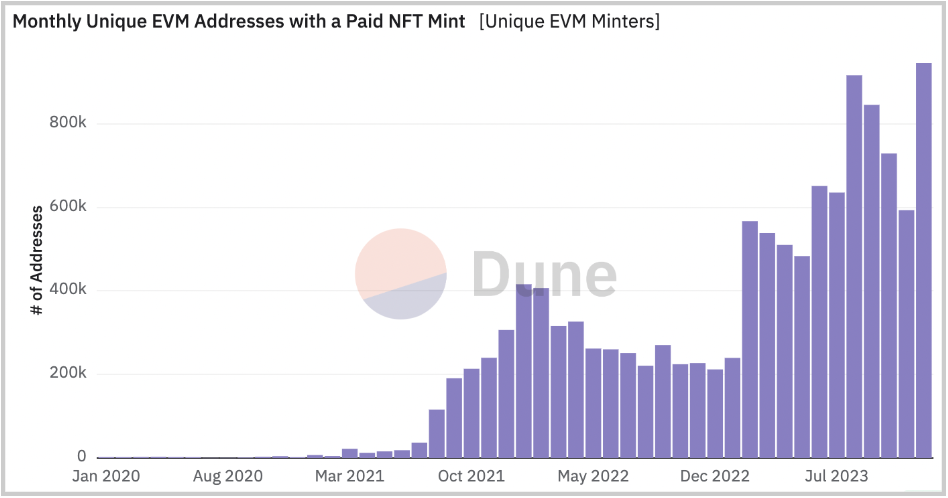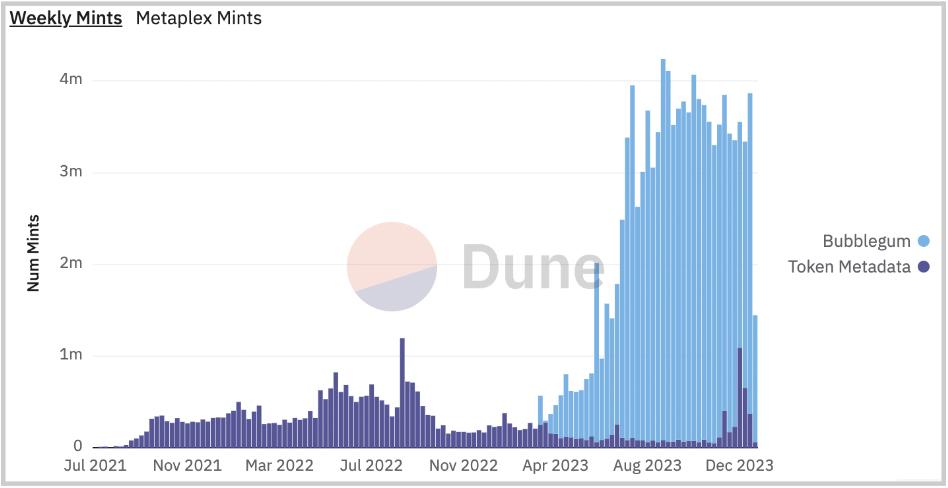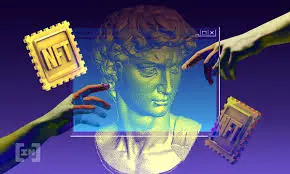USV's Latest Research: NFTs Are Timeless, Everything Is NFT
Original Title: “NFTs Have Evolved, NFTs Endure”
Author: Nikhil Raman, Union Square Ventures
Translated by: Biscuit, ChainCatcher
USV began experimenting with NFTs in 2017, initially helping Rare Pepes gain some popularity in niche markets, followed by the emergence of Cryptokitties. Shortly after that exploration, we invested in the team behind Cryptokitties and wrote:
We believe that digital collectibles are one of the many amazing things that blockchain enables, which were actually impossible before this technology emerged.
Since the birth of the internet, digital goods have been synonymous with abundance. The concept of ownership existed only within the confines of closed systems with dictators. The advent of public blockchains has unleashed the ability to own unique digital items that are fully owned by individuals—this concept is as powerful as it was six years ago. Ownership and verifiable provenance in the digital realm are transformative, and we have only scratched the surface of these ideas.
Bubble
NFTs exploded in 2017, and as many of you may have observed, a lot has happened in the following years. Here is a view of the weekly secondary sales volume of all public chain NFTs:

The monthly secondary trading volume across all chains peaked at around $6 billion in January 2022, bottomed out at about $300 million in October 2023, and rebounded to around $1.7 billion last month—significant growth in the Bitcoin and Solana ecosystems.
NFTs, especially those as collectibles, have gone through a massive hype cycle marked by asset bubbles. The bubble burst, and asset prices and secondary market trading volumes plummeted by over 85% and 95%, respectively. The market in 2021 was in an environment of extreme risk and zero interest rates, leading to particularly severe ups and downs.
If this story sounds familiar, it’s because it almost applies to all emerging innovative technologies. NFTs are a microcosm of the crypto ecosystem, both of which have recently experienced periods of irrational exuberance. In the framework of Carlota Perez (whose pioneering ideas we often rely on), we seem to be experiencing the initial installation phase of these technologies, where core infrastructure will continue to be laid.
Despite going through this "crazy" period and the collapse of asset values, the core idea of NFTs remains unchanged. They are an innovative medium, a representation of irreplaceable tools in our digital lives—tickets, memberships, collectibles, receipts, art, media, and likes.
In our view, the various bubbles we see in cryptocurrency, including the NFT frenzy, are part of how significant technological changes manifest and are inevitable. They also provide a direct benefit: speculative market bubbles provide, to some extent, the capital needed to build the next phase of infrastructure.
Innovation
The significant volatility in cryptocurrency has helped to highlight issues in the space, such as high transaction costs and poor accessibility for the average consumer, while the extreme price fluctuations have also helped fund solutions to these problems and drive us to continue building and innovating.
After 24 months and years of development, a large number of Layer 2 blockchains have emerged in the market, offering cheaper block space and faster finality solutions while still retaining Ethereum's strong security guarantees. Solana launched an NFT compression solution that allows developers and users to create NFTs at a cost of about 1/100 of a cent. Embedded wallets now provide a way to build low-friction crypto applications while maintaining trustlessness. New standards like ERC-6551 allow NFTs themselves to act as accounts/wallets, opening up design space for NFTs. Networks like Arweave have matured and largely solved the problem of storing arbitrary content on-chain (not just metadata).
The ultimate result of these improvements is that the NFT space is rapidly opening up, and interactions with NFTs are becoming cheaper and easier. In many cases, we now have tools to completely abstract the technology and allow users to engage in digital experiences supported by NFTs. Art and collectibles are just a small part of the puzzle; any digital artifact in our lives is applicable and may ultimately be replaced by NFTs.
Art and Collectibles
Digital collectibles (including art) were the initial way NFTs were adopted on the blockchain. They still constitute a part of NFTs and have accounted for nearly all of NFT sales and market value to date. Despite the asset bubble, they have not disappeared.
NFTs have brought tremendous opportunities for digital artists and creators, who can now monetize their work and meet the growing demand for digital creations. Collectors, speculators, and patrons can ultimately own and transfer unique and scarce digital items without permission, which in turn creates a vibrant market for many such assets. The internet-native financial rails provided by blockchain also make it easier for creators to sell their work to a global audience. Blockchain has also spawned new art forms and new elements while interacting with creative work (such as randomness).
Moreover, we live in a digital world, where the internet-native capital pool is steadily growing due to the influence of cryptocurrencies, and digital creation is becoming increasingly ubiquitous with the help of artificial intelligence. These trends are helping more people store more value in digital objects.
Behavioral Shifts
Despite the severe decline in trading activity and market value, the pace of creation in cryptocurrency remains strong. Every month, thousands of creators are still producing digital art, generative art, or AI art. Crypto users mint works from these collections every month.
We are also seeing new NFT behaviors emerge. Open edition-style minting activities are often zero-cost and have become increasingly popular in 2023. For example, projects will release open edition series within a fixed time window when launching products. Consumers choosing to mint NFTs is not a speculative act but a way to express support—consumers may benefit from it. In some cases, low-cost/no-cost minting is gradually becoming a new social vernacular, akin to "liking" or "retweeting."
These new behaviors are fueling the continued growth of low-cost minting activities. We can see that even though secondary trading volume has dried up in 2023, more users are minting NFTs than ever before. Some representative views of these trends:

Growth of minting addresses (a rough proxy for users)

Growth of Solana minting volume unlocked through compression (i.e., Bubblegum)
Everything is NFT
Much of this article focuses on specific aspects of NFTs and their revival and evolution, but in reality, NFTs are an underlying support that can represent almost anything.
The Ethereum Name Service uses NFTs to represent identity. Uniswap uses NFTs to represent liquidity provided to pools. Blackbird represents every relationship a user has with a restaurant as an NFT. Paragraph represents reader subscriptions as NFTs. Helium represents eligibility for network rewards (i.e., hotspot operators) as NFTs. And such examples are countless.
We are also excited to see more behaviors and artifacts represented by NFTs. From concerts, movies to airline tickets, everything should be NFTs. Anything that can benefit from true ownership and the composite value of open, permanent systems.
It is worth mentioning that NFTs are not always transferable—for example, many reusable KYC providers issue Soulbound tokens. Additionally, NFTs do not always have to represent digital objects—as non-fungible real-world assets seek to leverage blockchain, NFTs can often serve as digital twins, representing everything from trading cards to luxury handbags.
NFTs, like other blockchain standards, benefit from the openness of the blockchain and the consistency of standards. They are portable and can move with users to any application—while that application guarantees an understanding of what NFTs are and takes action on them, further expanding their utility. This also means that for any issued NFT, it can immediately access all existing tools built for that standard. Generally, this means that any NFT created can be immediately exchanged, borrowed, or donated on exchanges.
The composability and openness of blockchain data, along with expanded NFTs, hold tremendous potential but are not without issues. They can provide novel experiences and enable applications to understand users more richly, but we are still in the early stages of building these systems in a privacy-preserving manner. They can allow for transparent and programmatic value transfer, such as minting fees or royalties, but they can also allow applications to circumvent these rules (royalties are a boon for creators, and newer ecosystems choose to enforce royalties at the NFT standard level).
Final Thoughts
Like many other technologies before it, we are witnessing the ongoing evolution and improvement of cryptocurrencies (especially NFTs). We believe that NFTs are an extremely simple yet powerful cryptographic primitive, a unique feature of blockchain, and we are excited about the experiments and new experiences that are about to emerge.










